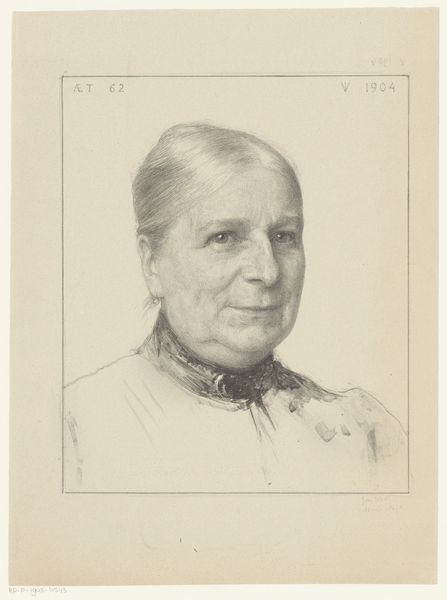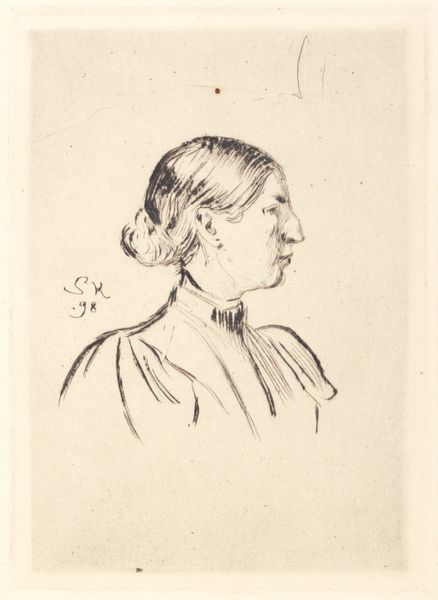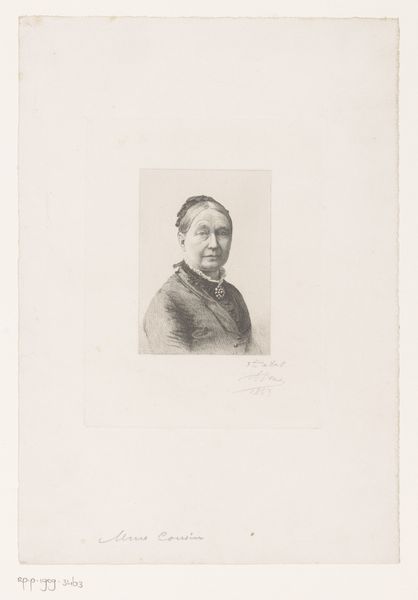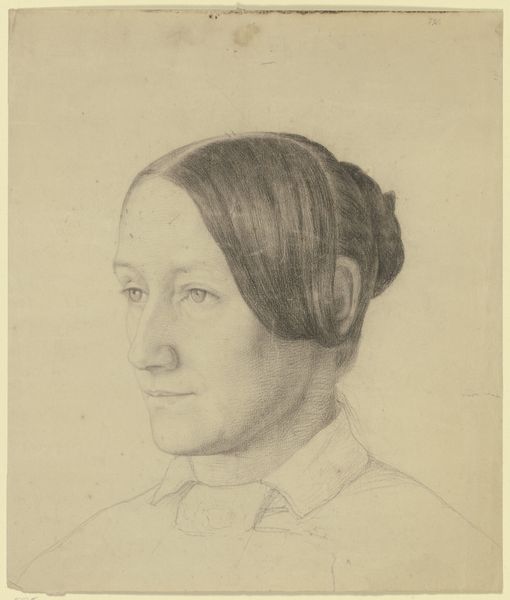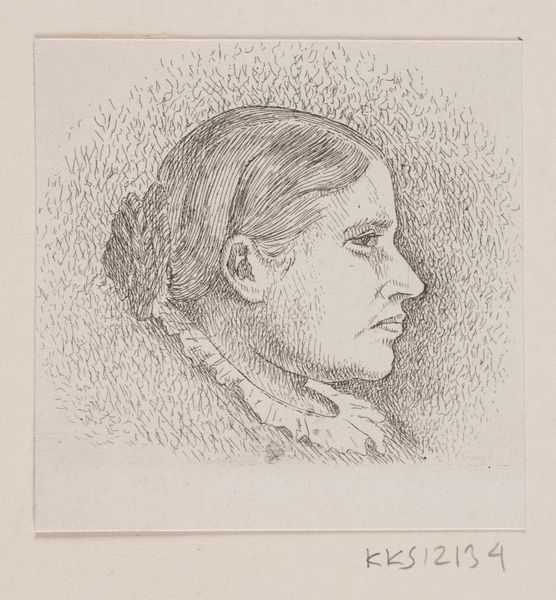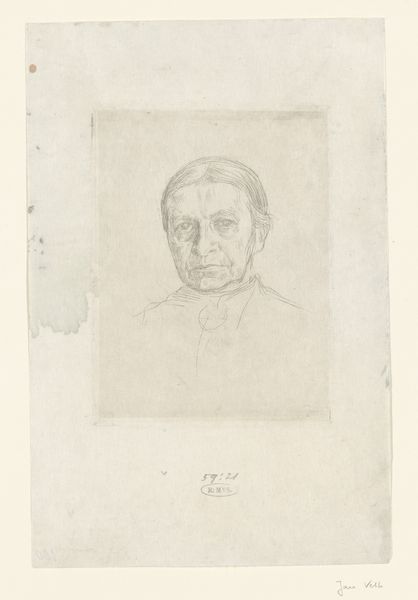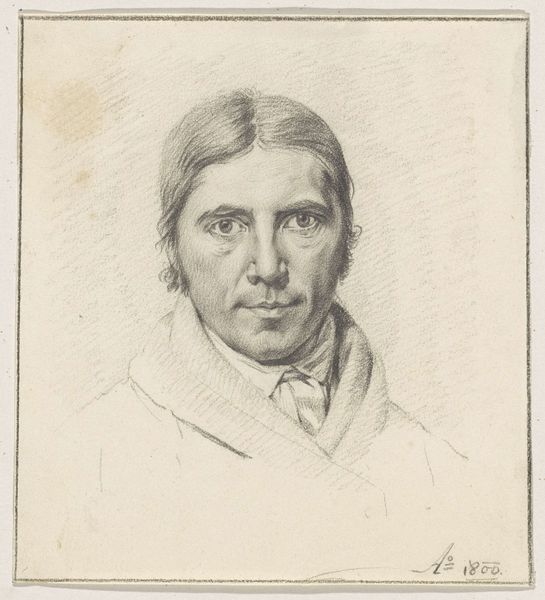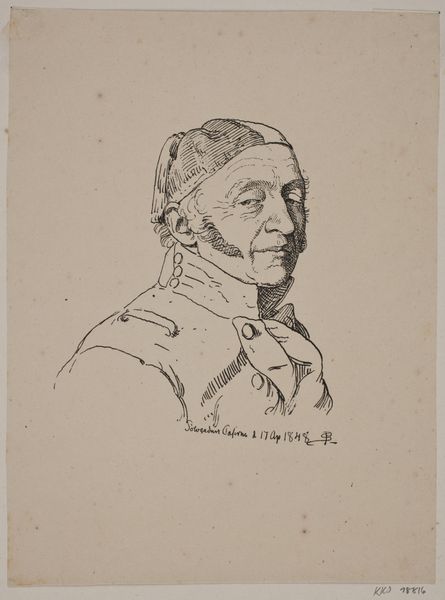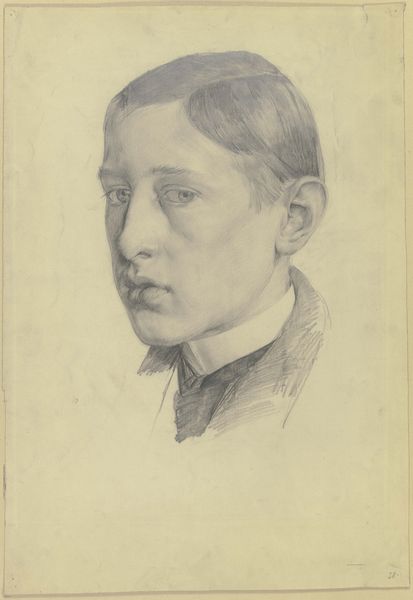
drawing, pencil
#
drawing
#
pencil
#
portrait drawing
#
academic-art
#
portrait art
#
fine art portrait
#
realism
Dimensions: height 390 mm, width 320 mm
Copyright: Rijks Museum: Open Domain
Editor: This is Jan Veth’s "Portrait of Jeltje de Bosch Kemper," created in 1896 using pencil. It feels incredibly precise, almost photographic. What do you notice about this work? Curator: The relentless detail speaks volumes. The graphite, a material often overlooked, here becomes a tool of almost surgical precision. Consider the social context: the late 19th century was a period of industrial boom. Do you think the artist consciously used graphite, the 'lead' of pencils mass-produced in factories, to portray a bourgeois woman like Jeltje de Bosch Kemper? It’s almost a commentary on the emerging industrialization creeping into the traditional realms of portraiture. Editor: That’s fascinating. I hadn't considered the implications of using pencil in that era. Was there a shift in how portraits were consumed as a result? Curator: Certainly. Think of the democratization of image production happening with photography at the time. While photography allowed for quick reproduction, pencil drawing retained a unique connection to handcraft, now intertwined with the industrial production of its materials. Veth walks a fine line between traditional representation and the influence of new materials and methods. This drawing signifies the tension between mass production and skilled craftsmanship. Editor: So, the very *means* by which the portrait was created influences how we should understand it. Curator: Precisely. The pencil strokes, seemingly delicate, are in fact testaments to the societal changes and their effect on the creation and consumption of art. Consider how different this is from a painted portrait, where the materials and labor are obscured. Editor: I’ll definitely look at portraiture differently now, considering not just *who* is represented, but *how* and with *what.* Curator: And also *why*! Considering the means of production offers such rich context for the work of art, inviting deeper thinking.
Comments
No comments
Be the first to comment and join the conversation on the ultimate creative platform.
